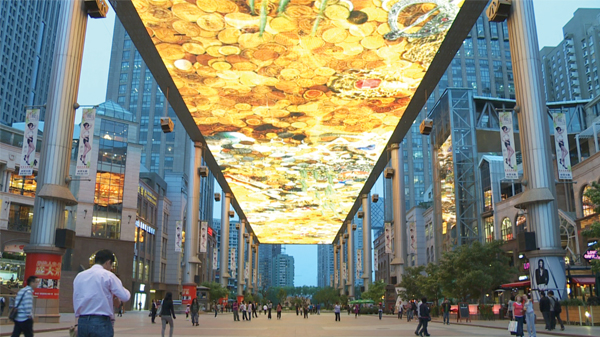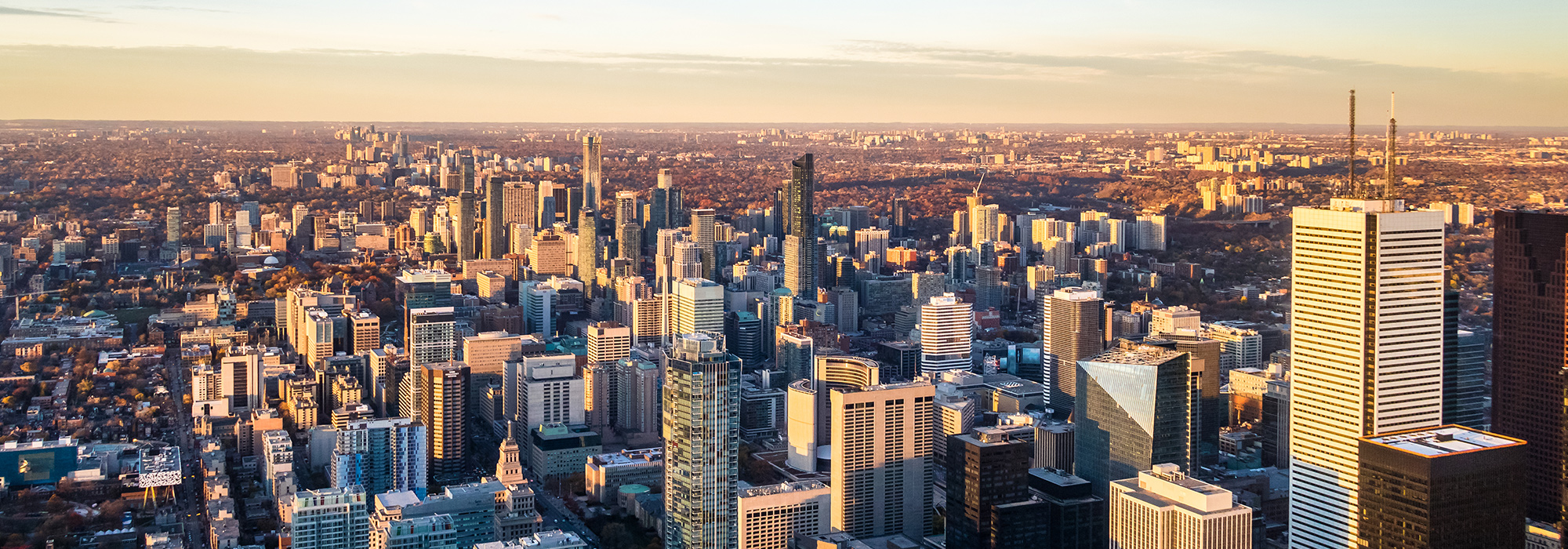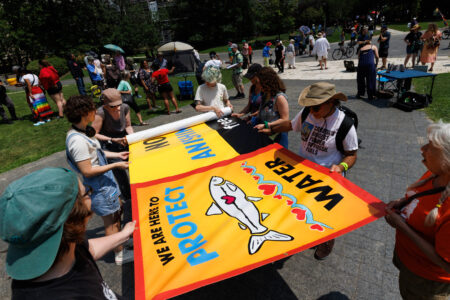
Within 40 years, the best projections contend that three-quarters of the planet’s people will live in cities, one-third of them in slums. This unprecedented migration from countryside to city sees people flowing into urban basins with a drive to improve their standard of living, placing unprecedented strains on our ability to create an environment that offers economic opportunity while retaining, or hopefully improving, livability.
How do we cope with this sprawling human footprint? How do we build the massive infrastructure developments needed to accommodate it, while maintaining density, walkability and connectedness in our urban design? And can we learn from past failures in planning — and lack of planning — to make these expanding cities into sustainable places for people to live?
These are the questions at the core of Urbanized, a full-length documentary produced and directed by Gary Hustwit that should be on the viewing list for anyone interested in how cities grew and where they’re going. Hustwit is fascinated by design (Urbanized is the third installment of a design trilogy, preceded by Helvetica, the history of a Swiss typeface, and Objectified, which examined industrial design), and the film’s focus is the design of cities. He presents this perspective through a cast of city builders — architects, urban planners, developers, politicians and civic activists — and highlights the role these actors play in shaping the urban environment.
But ultimately, Urbanized’s message is that people shape their city to their needs. Hustwit sees the solution to our urban challenges coming from ground level, led by the needs of citizens rather than dictated by the à¼ber-architects and planners who have made so many mistakes throughout the history of urbanization.
The battle lines are drawn in the contrast Hustwit makes between urban theorist Jane Jacobs, who makes a well-timed appearance to demonstrate that cities are at their most desirable when they consider the human scale at which people actually live, and Robert Moses, the epitome of the urban “visionary” who imposed his will on the development of New York City in the early 20th century. The result was auto-oriented development that cut New York City off from its water’s edge.
Livable cities are not haphazard, unexpected places. They are deliberate constructs of the imagination and ideas of those who care, resulting in the spaces where we grow up, live, work and play. When we forget to put people at the centre of our cities, Hustwit is telling us, it is easy for hubris to take over and mistakes to be made.
Urbanized is beautifully presented. Panoramic views of city skylines and breathtaking aerial portraits are presented in a way that makes even the slums look like uniform settlements. The film begins with the sound of traffic and the sun peering over a mountaintop that looms over the city of Athens. It pulls you into the story with images of other large, densely populated world cities. The reconstruction and revitalization, the constant need to tear down and give way to renewal has been left in the hands of politicians, landscape designers and planners to manage this chaos.
Urbanized is a wake-up call for how to learn from the mistakes of the past and reverse the trajectory of environmental degradation. It takes us from New York to New Orleans, Cape Town to Mumbai, Copenhagen to Santiago and Stuttgart to Detroit. (Canadian cities are largely ignored, though there are flashes of Toronto. The city’s skyline is used as backdrop, while along Dundas Street, the famed TTC streetcar rumbles by Regent Park, though it misses the neighbourhood’s 20-year, multibillion-dollar revitalization that is already considered internationally a success.) With a sweeping view of the great global cities, Urbanized examines what makes cities functional, livable and sustainable. The answers differ from place to place and have changed over time.

The film looks at the failed cityplanning wonder of the Garden City, initiated by Sir Ebenezer Howard in his book Garden Cities of Tomorrow, published in 1902. This modernist movement led to the urban debacle that is Brasilia, Brazil’s planned capital, built on the Garden City concept and considered in hindsight a spectacular failure.
In South Africa, there is an exhilarating story of creativity in community: Khayelitsha, a small town of 600,000 people that arose within Cape Town in the mid-1980s when the apartheid government sought to control the black population by forced resettlement. Though there was much resistance at first, people eventually settled in Khayelitsha. It was an incomplete community. There was inadequate housing, poor services and no local economy to speak of. With 80 percent unemployment, people were forced to travel long distances to find work. The landscape was strewn with large tracts of derelict land, and violence plagued the community.
But over time, through thoughtful planning and resident involvement, the community came together, adopting a program of violence prevention through urban upgrading. The community became better connected through simple improvements such as building safe zones along pedestrian walkways, adding proper lighting and active playgrounds for children. Urbanized shows solutions come not solely from governments, but through the engagement of people who understand what’s needed in their lives.
The tragedy of post-flood New Orleans highlights the futility of outsiders rushing in to fix things without taking their cues from those who live there. Well-meaning people like actor Brad Pitt descended on the Ninth Ward to help with the rebuilding. But the absence of good landscape planning to direct reconstruction efforts has resulted in a mash-up of designer homes that are shockingly out of character for New Orleans.
By contrast, Candy Chang, a public artist, asks the core question: What if residents had the tools for civic input to shape and develop their neighbourhood? Stickers and a Sharpie marker became the planning tool of choice. It allowed people to write their wish for their neighbourhood on the walls of abandoned buildings. Candy’s creativity helped to engage the community and boost its confidence. It is a powerful example of how residents not only know what needs fixing but also have ideas on how to fix it. Too many communities have to learn this the hard way.
Case in point: the Stuttgart 21 Project, an example of the right thing to do, done the wrong way. The development is a hugely expensive undertaking designed to remake the German city’s historic central train station with underground high-speed rail lines connecting it to major points in Europe from Paris to Budapest. Protestors have fiercely resisted the project since it was first announced in 1994, meaning that it is still unfinished, and violent demonstrations in 2010 ended up with police using mace and water cannons to disperse protestors.
But the controversy over Stuttgart 21 has also changed the way civic politics is conducted. The fallout catapulted the local Green Party into power. There were televised debates between the pro and anti forces and, when that failed to find consensus, a referendum on whether to go ahead with the project was held. The voters, it must be noted, voted to proceed with construction.
Recognizing the centrality of good transportation planning is a major focus of Urbanized. The predominant emphasis is on public and active transportation networks but, remarkably, the bicycle triumphs as the smart commute choice, keeping people healthy and pollution-free. With clever planning and foresight by city planners, the bicycle can be integrated into the urban landscape. Urbanized shows how those cities designed for car traffic instead cultivate a frequency of travel that brings them to a grinding halt in congestion.
The decaying images of Detroit are startling, implying that a city that relies on cars is on a path to economic decline as well.
We live for generations with the mistakes we make.
The toughest challenge of urbanization, however, is what to do about the massive slums and informal settlements enveloping big cities in Africa, India and China. The film has no quick fixes for a problem of this magnitude. There are small-scale examples of success in Peru and South Africa, but they do not begin to tackle the magnitude of the challenge.
Other complex issues are also overlooked. Cities place a huge call on natural resources. How do we ensure we can feed and supply city residents, especially as urban sprawl devours nearby farmland? But the most glaring omission is the film’s limited discussion of China, despite the fact that it is home to one in six people in the world, with millions descending on cities from rural communities every year.
Other than the mention of the New Beijing, the documentary misses an opportunity to explore the past 30 years of economic development that has driven the rise of mega-cities and how a country run by an engineering-technocratic elite is trying to manage it. Unfortunately, Hustwit settles for a wistful attempt to caution the Chinese — as well as Indians — to avoid the mistakes made in the developed world in the last century.
We live in a time of urgent needs to renew investment in our aging or inadequate urban infrastructure. Transportation leaves many Canadian downtowns choked in gridlock, crying out for a new transportation infrastructure that is effective, efficient and connected. It’s a costly proposition, but the global cities with which we compete are making these investments.
But if we are going to revitalize our cities, we need to do so in a way that doesn’t run rough shod over people. The massive amount of money required risks leading us astray (see Robert Moses), as corporate and government interests compete to benefit from the largesse. We will live for generations with the mistakes that are made. Too much central planning without regard for how people actually live in cities is a recipe for trouble. Residents must be given a role in shaping their environment, along with the best minds in urban design.
Urbanization leaves us with hope this can be done. The film’s tone is decidedly upbeat, choosing to believe that cities will work better if we listen to the thoughtful voices in our midst. Hustwit gives us several, and the best of them — New York City commissioner Amanda Burden and architectural historian Noah Chasin — are among the highlights. These are passionate, knowledgeable people, and you wish you could meet them to talk further about how to manage this global struggle to build better cities, and better lives.
Photo: Shutterstock by Diego Grandi








